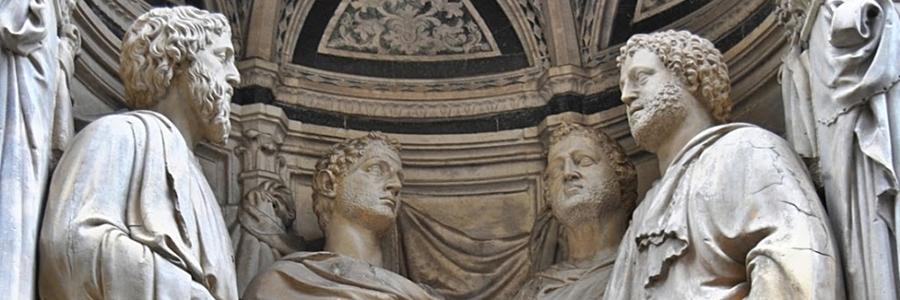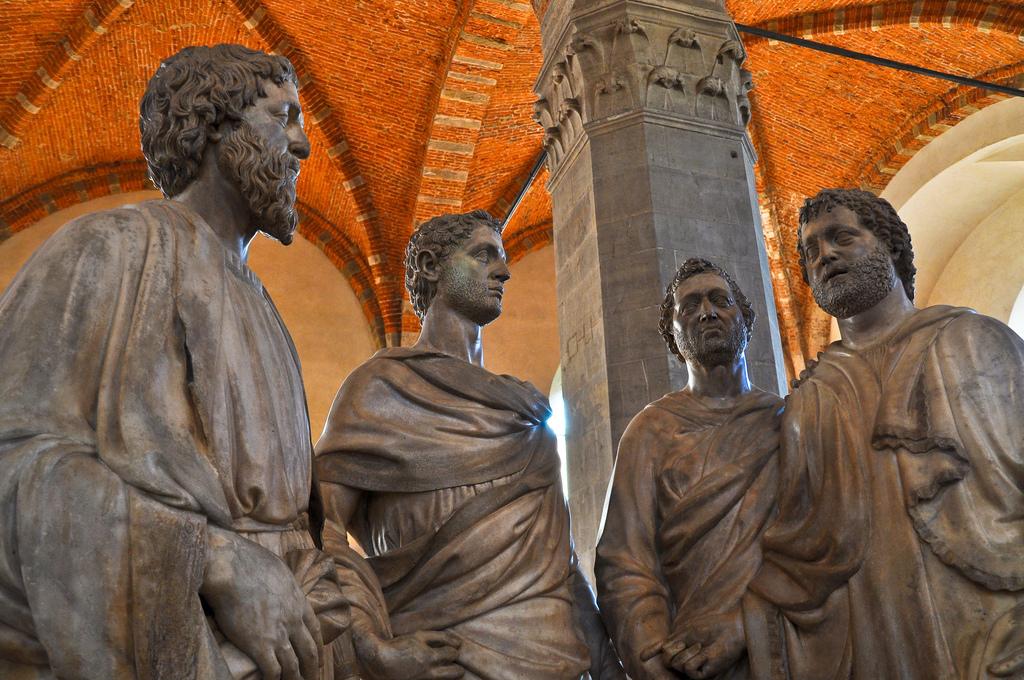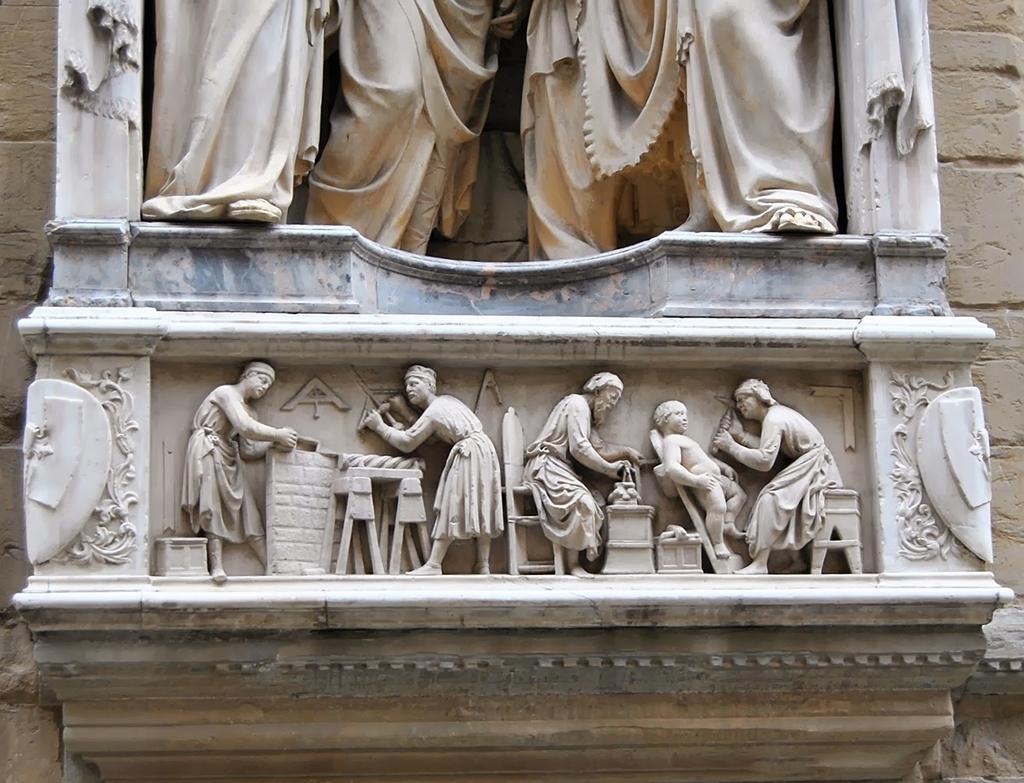
Lately, we’ve often talked about Florence and the Four Crowned martyrs. Today we try to find a connection between both.
We have already recommended you to visit Florence and to look at the natural stone Pietra Serena. By the way, you should also visit the church Orsanmichele which doesn’t really look like a church from the outside.
Get a glimpse of the niches along the building facade, where fourteen sculptures are located: the patron saints of Fine Arts of Florence. The guild “Arte dei Maestri di Pietra e Legname” (arts of master sculptors and woodcarvers) delegated the sculptor Nanni di Banco to create the patron saints of the sculptors: the Four Holy Crowned martyrs. The statues were carved from Carrara marble between 1409 and 1417. The sculptor accomplished a real masterpiece, as he he had to accommodate four sculptures instead of one inside the niche.
To make room for every statue, Nanni di Banco reduced the dimensions of the four statues (the biggest one measures about two metres), arranged them in semicircles and adapted them to the semi-cylindrical space of the niche. Through glances, gestures and figure perspective it appears as if the saints were talking to each other.
The four saints seem to mutely debate the importance of their refusal, as they are aware of the adverse consequences.
The man on the right appears to be talking, his mouth is open. The other men are listening carefully, but their gazes wander as if they wanted to make sure what will happen next.
These sculptures show us a magnificent art work made of natural stone and they also point out how noble the stonemason’s profession is. Although the work and the material are very hard, stonecutters produce art works with heart and soul. That’s why the sculptures probably influenced the art of that time, such as the famous fresco „The tribute money“ of the painter Massaccio, located in the Brancacci chapel, where the disciples are painted in semi-circle around Jesus Christ. Since 1999 the marble group has been exposed in the museum of the church Orsanmichele, while a copy has been placed in the niche.
The Four Holy Crowned (Casorio, Claudio, Sempronio and Nicostrato) were sculptors, who refused to chisel the sculpture of God Aesculapius for the Emperor Diocletian due to their Christian faith. As a consequence of their refusal, they were pursued and sentenced to death.
If you take a closer look at the statues inside the museum, you’ll notice that their quiet and serious facial expression says something like: ”Guys, if we don’t obey, it will end very badly!”.
The stonecutters are pretty tough and that’s probably why they are so fond of these audacious saints. The bas-relief under the tabernacle shows their role as patron saints of sculptors and architects, too. In honour of the guild, who delegated the art work, the four saints were represented while building, woodcarving, calculating construction dimensions and chiselling.
The art work speaks of the importance of community sense in the former Florence: after having discussed everything very calmly, a common decision was made, that could be a matter of life and death. While Donatello’s Saint Mark, who is located in an adjacent niche, represents the importance and dignity of the individual, the sculptures of Nanni di Banco symbolise the value of relationships and group dynamics.
Vasari tells a curious story about the making and the arrangement of the group of sculptures: After a bet with Banco, who had been able to place only three of four sculptures in the niche, Donatello repositioned the statues. According to Vasari, Nanni di Banco went to Prato and in the meantime, “ […]Donato took his disciples to work, carved the shoulders and arms of the sculptures to make more room, then he moved them closer and put the hand of one statue on the shoulder of another. He arranged the sculptures with such great skills, that Nanni’s error was fixed. […]”.
Actually, both statues, who Donatello was supposed to move closer, are carved of one single marble block. To create the group of sculptures, only three marble blocks were used, one of them served for the two statues on the right side. Thanks to their sophisticated pose and natural gestures, the two statues on the right are really outstanding. Beyond the Gothic doctrine, Nanni di Banco pictured the statues in a solemn pose, but gave them, at the same time, plastic volume through rich gown drapery. This art work is one of the oldest examples of the emerging fashion in Florence during the first decade of the fifteenth century.
Of course, you should also take a good look at the sculptures in the bas-relief below the niche, which, besides the mastery of famous sculptors, show mostly the skills and the capacities of stonecutters and master stonemasons from the natural stone industry.
We are taking about Florence in this article, but actually there are several buildings and artwork throughout Italy, that testify the close relationship between natural stone and art.


